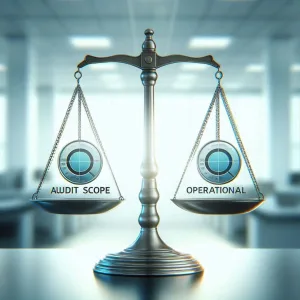Insurance auditing is a critical process within the insurance sector, serving as a mechanism to ensure compliance, accuracy, and reliability in financial reporting. Defined as the systematic examination of an insurer’s financial statements, operations, and internal controls, insurance auditing plays a vital role in maintaining the integrity of the insurance industry. It helps identify risks, assess underwriting practices, and evaluate claims reserves, ultimately safeguarding the interests of policyholders and stakeholders alike [3].
In recent years, the landscape of insurance auditing has been significantly transformed by the integration of technology. Leveraging advanced tools and techniques, auditors can enhance their efficiency, accuracy, and overall effectiveness. Technologies such as data analytics, artificial intelligence (AI), and automation are not only streamlining the audit process but also providing deeper insights into the operations of insurance companies. This technological revolution is enabling auditors to move beyond traditional methods, allowing for a more proactive approach to risk management and compliance [15].
The purpose of this blog post is to explore the pivotal role that technology plays in revolutionizing the insurance auditing process. By examining various tools and techniques, we aim to provide valuable insights for IT auditors and insurance professionals. Understanding these advancements is essential for adapting to the evolving landscape of insurance auditing, ensuring that both auditors and insurers can effectively navigate the complexities of compliance and risk management in today’s digital age [4][12].
The Traditional Insurance Auditing Landscape
In the realm of insurance auditing, traditional methods have long been the cornerstone of ensuring compliance and accuracy. However, as the industry evolves, these conventional processes are increasingly being scrutinized for their limitations and inefficiencies.
Traditional Auditing Processes and Their Limitations
Insurance auditing has historically relied on manual processes that involve extensive documentation and verification. Common practices include:
- Vouching Transactions: Auditors meticulously verify each transaction, which can be time-consuming and labor-intensive. This method, while thorough, often leads to delays in the audit process and can become repetitive over time, resulting in diminishing returns on effort [11].
- Paper-Based Documentation: The reliance on paper-based records has been a significant barrier to efficiency. Auditors often spend considerable time sifting through physical documents, which not only slows down the process but also increases the risk of human error [14].
- Limited Scope of Review: Traditional audits typically follow a set cycle, often spanning 1-3 years, which may not adequately address the dynamic nature of the insurance industry. This can lead to gaps in compliance and oversight, as auditors may miss emerging risks or changes in regulations [3].
Common Challenges Faced by Auditors in the Insurance Industry
Auditors in the insurance sector encounter several challenges that hinder their effectiveness:
- Complexity of Regulations: The insurance industry is subject to a myriad of regulations that can vary significantly by jurisdiction. Keeping up with these changes requires substantial resources and expertise, which can strain traditional auditing methods [1].
- Volume of Data: The sheer volume of data generated by insurance companies is overwhelming. Manual auditing processes struggle to keep pace with this growth, leading to potential oversights and inaccuracies in reporting.
- Time Constraints: The traditional audit cycle can be lengthy, often resulting in audits that are outdated by the time they are completed. This delay can compromise the relevance of the findings and recommendations [3][12].
The Need for Improvement in Efficiency, Accuracy, and Compliance
Given the limitations and challenges of traditional auditing methods, there is a pressing need for improvement in several key areas:
- Efficiency: Automating routine tasks can significantly reduce the time spent on audits, allowing auditors to focus on more complex issues that require professional judgment. This shift can lead to faster turnaround times and more timely insights for stakeholders [12].
- Accuracy: The integration of technology, such as data analytics and artificial intelligence, can enhance the accuracy of audits by minimizing human error and providing more robust data analysis capabilities. This is particularly crucial in the insurance sector, where precision is paramount [13].
- Compliance: As regulatory requirements continue to evolve, leveraging technology can help ensure that audits are not only compliant but also proactive in identifying potential risks. Automated systems can be designed to flag discrepancies and ensure adherence to the latest regulations, thereby enhancing overall compliance efforts [1].
While traditional insurance auditing methods have served their purpose, the need for modernization is clear. By embracing technology, the insurance industry can overcome the limitations of conventional processes, leading to more efficient, accurate, and compliant auditing practices.
Emerging Technologies in Insurance Auditing
The insurance auditing landscape is undergoing a significant transformation, driven by the integration of advanced technologies. These innovations not only enhance the effectiveness of audits but also streamline processes, improve accuracy, and bolster security. Below are key technologies that are revolutionizing the auditing process in the insurance sector.
Role of Data Analytics in Enhancing Audit Effectiveness
Data analytics plays a crucial role in modern insurance auditing by enabling auditors to sift through vast amounts of data efficiently. By leveraging sophisticated data analysis techniques, auditors can identify patterns, anomalies, and trends that may indicate potential risks or areas of concern. This capability allows for:
- Improved Risk Assessment: Insurers can utilize data analytics to conduct more accurate risk assessments, leading to better-informed decision-making and resource allocation [8].
- Enhanced Audit Quality: The ability to analyze large datasets in real-time enhances the quality of audits, allowing for more thorough examinations and timely insights [10].
Artificial Intelligence (AI) and Machine Learning in Fraud Detection
Artificial intelligence and machine learning are becoming indispensable tools in the fight against fraud within the insurance industry. These technologies offer:
- Predictive Analytics: AI algorithms can analyze historical data to predict fraudulent activities, enabling auditors to focus their efforts on high-risk areas [12].
- Automated Anomaly Detection: Machine learning models can automatically detect unusual patterns in claims or transactions, significantly reducing the time and effort required for manual reviews.
Impact of Cloud Computing on Data Accessibility and Collaboration
Cloud computing has transformed how insurance companies manage and access data, leading to enhanced collaboration and efficiency in auditing processes. Key benefits include:
- Centralized Data Storage: Cloud platforms allow for the storage of vast amounts of data, making it easily accessible to auditors regardless of their location.
- Real-Time Collaboration: Teams can collaborate in real-time, sharing insights and findings instantly, which accelerates the audit process and improves communication among stakeholders [10].
Blockchain Technology: Enhancing Transparency and Security
Blockchain technology is emerging as a game-changer in the insurance auditing field, offering unique advantages that enhance both transparency and security. Its potential includes:
- Immutable Records: Blockchain provides a secure and tamper-proof ledger of transactions, which can significantly reduce the risk of fraud and errors in the auditing process [7].
- Multi-Party Validation: The technology enables real-time validation of data across multiple parties, ensuring that all stakeholders have access to the same trusted information, thereby enhancing the overall integrity of the audit.
The integration of these technologies—data analytics, AI, cloud computing, and blockchain, into insurance auditing is not just a trend but a necessity for modern auditors. By embracing these tools, insurance professionals can enhance audit effectiveness, improve fraud detection, and ensure greater transparency and security in their operations. As the industry continues to evolve, staying abreast of these technological advancements will be crucial for IT auditors and insurance professionals alike.
Tools for Modern Insurance Auditing
In the rapidly evolving landscape of insurance auditing, technology plays a pivotal role in enhancing efficiency, accuracy, and collaboration. This section explores various technological tools that are transforming the audit process, making it more streamlined and effective for IT auditors and insurance professionals.
Popular Data Analytics Tools Used in Insurance Auditing
Data analytics is at the forefront of modern insurance auditing, enabling auditors to analyze vast amounts of data quickly and accurately. Some popular tools include:
- Tableau: A powerful data visualization tool that helps auditors create interactive and shareable dashboards, making it easier to identify trends and anomalies in data.
- SAS: Known for its advanced analytics capabilities, SAS provides tools for predictive analytics, data mining, and statistical analysis, which are essential for risk assessment in insurance.
- Power BI: This Microsoft tool allows auditors to visualize data and share insights across the organization, facilitating better decision-making based on real-time data analysis.
- ACL Analytics: Specifically designed for auditors, ACL offers data analysis and visualization tools that help in identifying risks and ensuring compliance with regulations.
Audit Management Software and Its Features
Audit management software is crucial for organizing and streamlining the audit process. Key features of these tools include:
- Centralized Documentation: These platforms allow auditors to store and manage all audit-related documents in one place, improving accessibility and collaboration.
- Risk Assessment Modules: Many audit management tools come with built-in risk assessment features that help auditors identify and prioritize risks effectively.
- Reporting and Analytics: Comprehensive reporting capabilities enable auditors to generate detailed reports on audit findings, trends, and compliance status, enhancing transparency and accountability.
- Task Management: These tools often include task assignment and tracking features, ensuring that all audit activities are monitored and completed on time.
Collaboration Tools for Remote Audits
With the rise of remote work, collaboration tools have become essential for conducting audits effectively. Some notable tools include:
- Microsoft Teams: This platform facilitates real-time communication and collaboration among audit teams, allowing for seamless sharing of documents and discussions.
- Zoom: Widely used for virtual meetings, Zoom enables auditors to conduct interviews and discussions with stakeholders remotely, ensuring that audits can proceed without physical presence.
- Slack: A messaging platform that allows for organized communication through channels, making it easier for audit teams to collaborate and share updates in real-time.
Automated Workflows and Robotic Process Automation (RPA)
The integration of automated workflows and RPA is revolutionizing the audit process by reducing manual tasks and increasing efficiency. Key benefits include:
- Efficiency Gains: Automation of repetitive tasks, such as data entry and report generation, allows auditors to focus on more strategic activities, enhancing overall productivity.
- Error Reduction: Automated processes minimize the risk of human error, leading to more accurate audit results and findings.
- Scalability: RPA can easily scale to handle increased workloads, making it suitable for audits of varying sizes and complexities.
- Enhanced Compliance: Automated workflows ensure that audit processes adhere to regulatory requirements consistently, improving compliance and reducing risks.
Leveraging technology in insurance auditing not only streamlines the audit process but also enhances the quality and reliability of audit outcomes. By adopting these modern tools and techniques, IT auditors and insurance professionals can significantly improve their auditing practices, ensuring they remain competitive in a technology-driven environment.
Techniques for Effective Technology Integration
The integration of technology into insurance auditing is transforming the landscape of internal audits, making them more efficient, accurate, and data-driven. As IT auditors and insurance professionals navigate this evolution, it is crucial to adopt effective strategies for integrating technology into audit processes. Here are key points to consider:
1. Importance of Training Auditors on New Technologies
Training is essential for auditors to effectively utilize new technologies. As the auditing field increasingly incorporates advanced tools such as artificial intelligence (AI) and data analytics, auditors must be equipped with the necessary skills to leverage these technologies. Upskilling auditors not only enhances the quality of audits but also improves the overall audit experience. Organizations should invest in continuous education programs that focus on the latest technological advancements and their applications in auditing [2][10].
2. Best Practices for Implementing Technology in Audit Procedures
Implementing technology in audit procedures requires a strategic approach. Here are some best practices:
- Assess Current Capabilities: Evaluate existing audit processes and identify areas where technology can add value, such as automating routine tasks or enhancing data analysis [11].
- Pilot Programs: Start with pilot projects to test new technologies in a controlled environment. This allows auditors to gain hands-on experience and provides insights into potential challenges before full-scale implementation [12].
- Collaborative Approach: Involve auditors in the selection and implementation of technology solutions. Their input can help ensure that the tools meet practical auditing needs and enhance workflow efficiency [14].
3. Significance of Data Governance and Cybersecurity Measures
As technology becomes integral to auditing, robust data governance and cybersecurity measures are paramount. Auditors must ensure that data integrity is maintained and that sensitive information is protected from breaches. Implementing strong data governance frameworks helps in managing data quality and compliance with regulations. Additionally, cybersecurity protocols should be established to safeguard against potential threats, ensuring that the audit process remains secure and reliable [4][10].
The integration of technology into insurance auditing is not just a trend but a necessity for modern audit practices. By focusing on training, implementing best practices, ensuring data governance, and learning from successful case studies, IT auditors and insurance professionals can effectively navigate this technological revolution and enhance their audit processes.
Future Trends in Insurance Auditing Technology
The insurance auditing landscape is undergoing a significant transformation, driven by advancements in technology. As we look ahead, several key trends are poised to shape the future of audits, particularly in the realm of insurance. Here are some of the most notable developments:
1. Evolution of AI and Machine Learning in Predictive Analytics
Artificial Intelligence (AI) and machine learning (ML) are set to revolutionize the way audits are conducted. These technologies enable auditors to analyze vast amounts of data quickly and accurately, identifying patterns and anomalies that may indicate risks or compliance issues. The integration of AI in predictive analytics will allow auditors to forecast potential problems before they arise, enhancing the overall effectiveness of the audit process. This shift towards data-driven insights will empower auditors to make more informed decisions and provide greater value to their organizations [4][8].
2. Rise of Real-Time Auditing and Continuous Monitoring
The trend towards real-time auditing is gaining momentum, facilitated by advancements in technology such as blockchain and cloud computing. This approach allows auditors to access and analyze financial data as transactions occur, significantly reducing the time lag traditionally associated with audits. Continuous monitoring will enable auditors to maintain an ongoing assessment of risk and compliance, rather than relying solely on periodic reviews. This shift not only enhances the efficiency of the audit process but also provides organizations with timely insights that can inform strategic decision-making [3][9].
3. Impact of Regulatory Changes on Technology Adoption
As the regulatory landscape evolves, the adoption of technology in insurance auditing will be influenced by new compliance requirements. Regulators are increasingly emphasizing the importance of data integrity and transparency, which will drive the need for advanced technological solutions. Auditors will need to stay abreast of these changes and adapt their practices accordingly, leveraging technology to ensure compliance and mitigate risks. The integration of AI and data analytics will be crucial in meeting these regulatory demands, as they provide the tools necessary for effective monitoring and reporting [11].
4. Future Role of Auditors in a Technology-Driven Environment
In a technology-driven environment, the role of auditors is expected to evolve significantly. As routine tasks become automated through AI and machine learning, auditors will shift their focus towards more strategic activities, such as risk assessment and advisory services. This transition will require auditors to develop new skills and competencies, particularly in data analysis and technology management. The future auditor will be a tech-savvy professional, capable of leveraging advanced tools to enhance the audit process and provide valuable insights to stakeholders [5][10].
The future of insurance auditing is being shaped by technological advancements that promise to enhance efficiency, effectiveness, and compliance. By embracing these trends, auditors can position themselves as key players in the evolving landscape of insurance auditing, ultimately driving better outcomes for their organizations.
Conclusion
In the rapidly evolving landscape of insurance auditing, technology has emerged as a transformative force, fundamentally reshaping how audits are conducted. The integration of advanced tools such as data analytics, artificial intelligence (AI), and automation software has not only streamlined processes but also enhanced accuracy and efficiency in audits. These technologies enable auditors to analyze vast amounts of data quickly, identify patterns, and mitigate risks more effectively than ever before. For instance, the use of AI and machine learning models allows for the automation of premium audit processes, significantly reducing the time and effort required for manual audits.
Moreover, the shift towards digital solutions has empowered insurance professionals to manage regulatory compliance more efficiently, ensuring transparency and adherence to industry standards [12]. As organizations increasingly rely on customer data and advanced analytics, the ability to leverage these insights becomes crucial for making informed decisions and driving strategic value [8][13].
As we reflect on the transformative impact of technology in insurance auditing, it is essential for IT auditors and insurance professionals to embrace these advancements. By investing in the right technology and continuously adapting to new tools and methodologies, professionals can enhance their operational efficiency and maintain a competitive edge in the market [7][9].
In conclusion, the call to action is clear: commit to continuous learning and adaptation in the face of technological advancements. By doing so, you will not only improve your auditing processes but also contribute to the overall growth and innovation within the insurance industry. Embrace the future of insurance auditing—leverage technology to unlock new possibilities and drive success.
Find out more about Shaun Stoltz https://www.shaunstoltz.com/about/
This post was written by an AI and reviewed/edited by a human.



